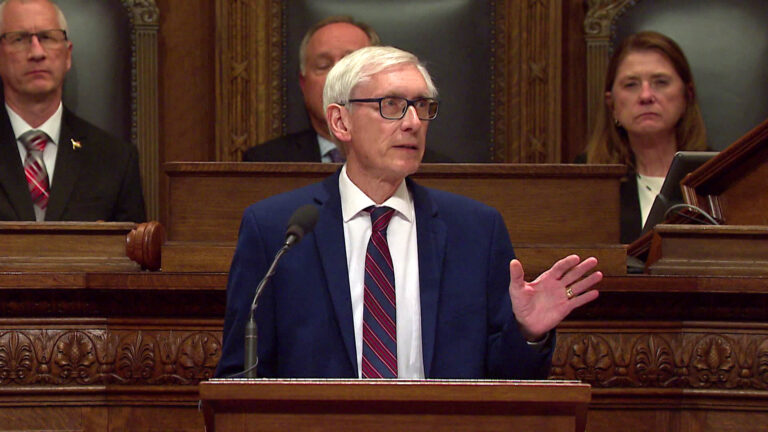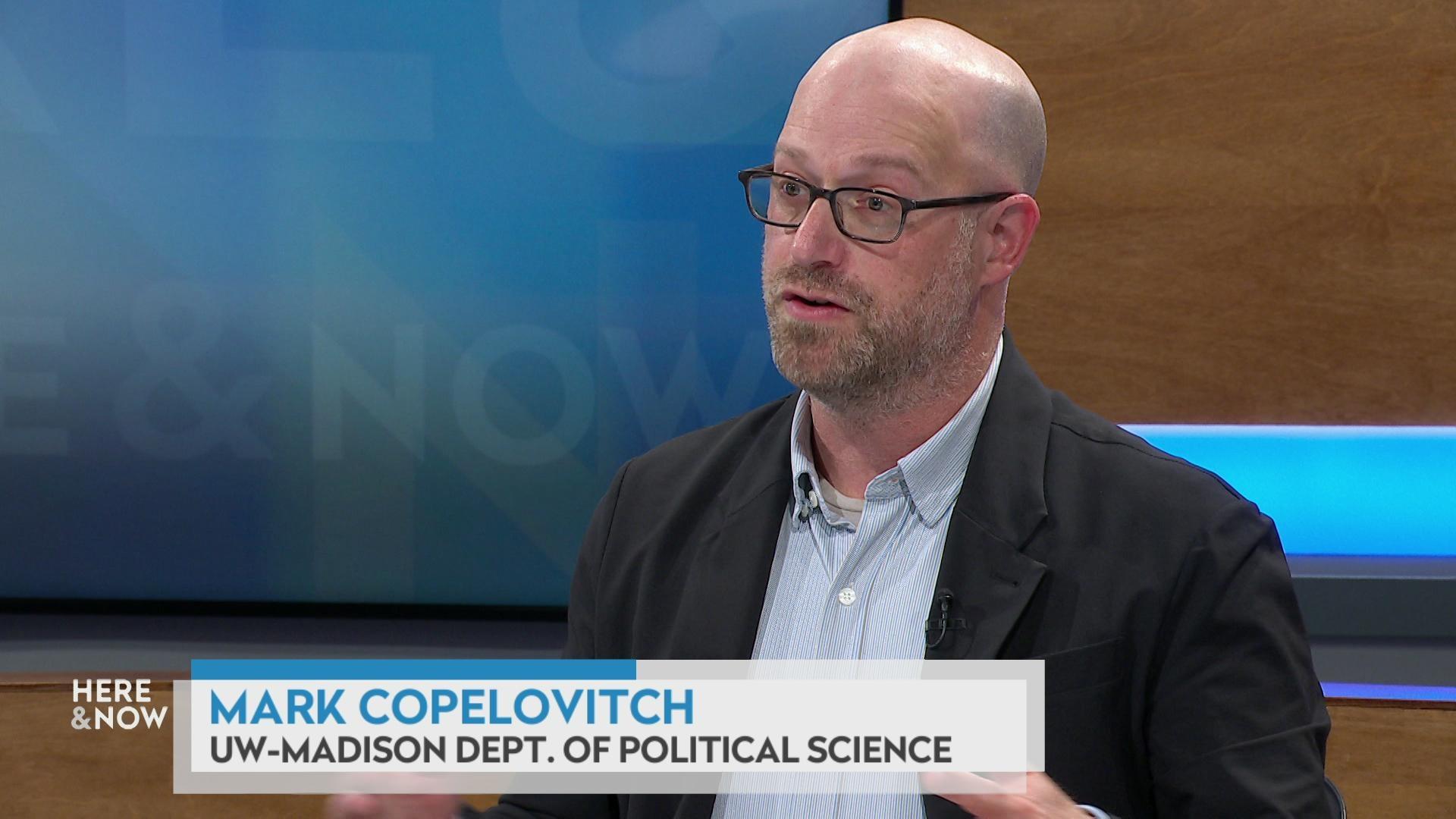Frederica Freyberg:
As the political fight wears on over COVID response, the race in Wisconsin to get as many vaccines in arms is in its early stages. So far, according to latest tracking, 143,000 people in the state have completed the two-shot series. Turning back to more reporting from Zac, he met up with a Wisconsin doctor to show us how the vaccine process is working. A process that is, of course, also mired in politics.
Zac Schultz:
It’s Friday and Dr. Matt Anderson is about to find out from the state how many vaccine doses UW Health will receive for the next week.
Matt Anderson:
Those doses tend to show up either sometime on Monday or occasionally on Tuesday.
Zac Schultz:
Between Friday and Monday, they need to confirm appointments with patients.
Matt Anderson:
We’ve got appointments that are on the books for Monday and we’re doing a lot of logistics to balance our supplies and such.
Zac Schultz:
By Monday, the state is asking how many vaccine doses they can distribute the following week.
Matt Anderson:
What we’ll be looking at with that is how many appointments do we have capacity to do in the coming week, you know, and schedule them such and then we’re relaying that to them.
Zac Schultz:
As the shots come in, shots go out and the cycle repeats.
Matt Anderson:
Those shots are getting in and then we’re managing those and getting those put out. So it’s not a lengthy period of time that they’re sitting in the freezer.
Zac Schultz:
Dr. Anderson is the lead physician for the COVID vaccine work stream at UW Health. He says in the last month, they’ve built up their capacity to distribute 5,000 first doses of the vaccine each week. They administer second doses of the vaccine as well, but those are automatically sent out and don’t require a separate request. He soon hopes to have the staff and spacing capacity for 6,000 doses a week.
Matt Anderson:
Really the limiting factor right now is vaccine supply. If we get more vaccine, we will accommodate that by figuring out how the staffing model works.
Zac Schultz:
UW Health’s vaccine supply is determined by Wisconsin’s Department of Health Services, which takes orders from vaccinators across the state and then requests that amount from the federal government and the vaccine producers.
Julie Willems Van Dijk:
Right now we just don’t have enough vaccine.
Zac Schultz:
Julie Willems Van Dijk is deputy secretary at DHS. She says the federal government has only been allotting the whole state of Wisconsin around 70,000 first doses a week. But she’s hoping the new Biden administration will soon be able to boost that number.
Julie Willems Van Dijk:
Really vaccine supply is our limiting factor right now, but the good news is we will have this system and we have vaccinators in place for the days when the supply increases.
Zac Schultz:
Dr. Anderson agrees we’ll be in a better position in a couple months. But says right now his biggest frustration is the lack of predictability.
Matt Anderson:
Predictability. I think for us knowing we’re going to get a certain number to find out on Friday what you’re getting for Monday is not ideal. We recognize that there are state limitations there with the guidance they’re getting from the federal government.
Robin Vos:
Wisconsin’s vaccine roll-out has been a national embarrassment.
Zac Schultz:
Republicans in the Legislature say the blame for all of this falls on Governor Tony Evers. The Assembly passed a bill that requires DHS to submit their plans for vaccination to legislative committees and expand eligibility for the shots to anyone above age 60. Currently vaccinators are working with people above age 65.
Robin Vos:
Here we are in Wisconsin, where if you ask the average citizen, they have no idea what our plan is, they have no idea when they can get a vaccine and they have no idea besides calling their local hospital frantically how they can get access to the vaccine.
Zac Schultz:
Of course, DHS does have vaccine plans which are available to the public. Democrats say it’s ironic Republicans are criticizing the governor about vaccines at the same time they’re eliminating his mask mandate. They say Republicans are just trying to blame Governor Evers for a supply problem that stems from the Trump administration.
Gordon Hintz:
Eligibility is not the same as availability. If I say we only have 70,000 vaccines made available to us each week because there wasn’t a plan, because there aren’t enough vaccines and we know that we have 700,000 people over the age of 65. I think everybody can do the math.
Zac Schultz:
Republicans are basing their claim of ineptitude off a CDC website which tracks the number and percentage of vaccines each state has distributed. For a time, Wisconsin ranked near the bottom of the country. DHS says that was largely a reporting error, with the CDC website comparing three-day-old Wisconsin numbers to current numbers from other states.
Julie Willems Van Dijk:
I really caution people about these comparisons on different sites that they may not be apple-to-apple comparisons.
Zac Schultz:
Another issue in the early days of vaccine distribution was many of Wisconsin’s doses were being sent to Walgreens and CVS drug stores, who were responsible for vaccinating people in skilled nursing facilities.
Julie Willems Van Dijk:
We have a lot of facilities in this group and a lot more than a lot of other states and CVS and Walgreens are finding that out as they go to schedule people.
Zac Schultz:
Some states like West Virginia used local pharmacies for that program and found themselves at the top of the CDC’s list.
Matt Anderson:
I think the West Virginia’s model, from my understanding of it, really gets to that simplicity factor of simplicity, centralization.
Zac Schultz:
Dr. Anderson says you can compare the early days of vaccine distribution to the early days of COVID testing. A year ago, tests were hard to come by. But within a few months a number of different tests were available. With new vaccines coming online and production ramping up, Dr. Anderson says we’ll be in a better place by spring.
Matt Anderson:
I would be very hopeful we’ll be in a much different place when we talk about late March, April, into there.
Zac Schultz:
Reporting from Madison, I’m Zac Schultz for “Here & Now.”
Search Episodes
News Stories from PBS Wisconsin

Donate to sign up. Activate and sign in to Passport. It's that easy to help PBS Wisconsin serve your community through media that educates, inspires, and entertains.
Make your membership gift today
Only for new users: Activate Passport using your code or email address
Already a member?
Look up my account
Need some help? Go to FAQ or visit PBS Passport Help
Need help accessing PBS Wisconsin anywhere?

Online Access | Platform & Device Access | Cable or Satellite Access | Over-The-Air Access
Visit Access Guide
Need help accessing PBS Wisconsin anywhere?

Visit Our
Live TV Access Guide
Online AccessPlatform & Device Access
Cable or Satellite Access
Over-The-Air Access
Visit Access Guide
 Passport
Passport


















Follow Us